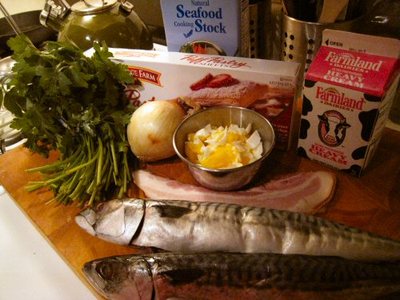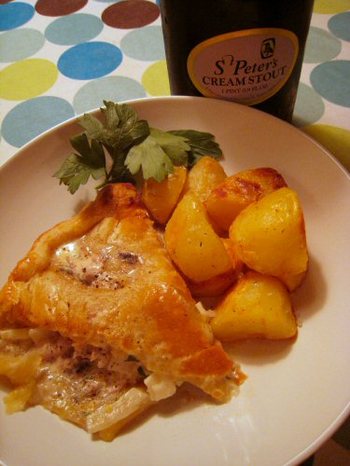Sunday Night Special: Turkey with Mint and Hot Chiles & Makeua Oop
Sometimes Sunday night is a loose concept. I ended up making these two dishes on separate evenings, though they were originally intended as a single meal. Whenever I cook for myself, I eat less. That’s troublesome, though I know I’m not unique; what I’d always suspected–when a couple moves in together, the man gets healthier while the woman gains weight–was proven by science.
I turned to my trusty, banged up review copy of Hot, Sour, Salty, Sweet (it was one of the only perks I got from a short lived online culinary job I had in 2000. Now that I’m all library science I can’t finagle a web job to save my life) because I recalled the book containing a turkey recipe and I’ve been trying to find a use for three drumsticks in my freezer (still on the using up old food mission). I’d much rather experiment with a Laotian salad than mess with tetrazzini or some other abomination.
I’m not sure why I didn’t learn my lesson about trying to poach turkey legs after running into trouble during Thanksgiving. It doesn’t work. They don’t cook all the way using the bring to a boil, turn off the heat and leave with the lid on for an hour approach. And when you get exasperated, then turn the heat back on and simmer for a while, they firm up to near uselessness. I just imagined that the tough meat was approximating a wild Southeast Asian bird.
The recipes from this book tend to be tame with the heat, so don’t hesitate to use more chile. I used five chiles and had to resist the urge to add sugar (I don’t like tweaking recipes I’ve never made before). I thought I already had a batch or roasted rice powder in case I needed to make an impromptu larb, but it was nowhere to be found. Really, it’s no big deal to omit it. You still get the gist.
Turkey with Mint and Hot Chiles
8 to 10 ounces cooked light and dark turkey meat, roughly cut into ½ inch chunks (about 2 cups packed)
2 tablespoons thinly sliced shallots, separated into rings
½ cup loosely packed coarsely torn coriander leaves
½ cup loosely packed coarsely chopped mint leaves
1 teaspoons minced bird chile, or more to taste
Freshly ground black pepper to taste
2 tablespoons Thai fish sauce, or to taste
3 tablespoons fresh lime juice
1 tablespoon roasted rice powder, or more to taste
Combine the meat and shallots in a shallow bowl. Add the coriander and mint leaves and mix well.
In a small bowl, combine all the remaining ingredients except the rice powder and stir to mix well. Pour over the salad and toss to distribute the dressing thoroughly. Just before serving, sprinkle on the rice powder, if using.
Serves 4
If you Google “best eggplant dish ever” you’ll find caponata, baked eggplant with mushroom and tomato sauce, szechuan eggplant stir-fry and a few others. The Best Eggplant Dish Ever title is the authors’ not mine. I don’t like to use superlatives, so I hesitate to say best, but I definitely think it’s probably better than any of those listed above.
I could’ve sworn I made this before but I definitely would’ve remembered it now that I’ve tasted it. Mine was slightly bitter, probably because I used small Italian eggplants instead of Asian ones. And I kept wanting to add fish sauce, but stuck with the recommended salt. Perhaps I’m finally getting a handle on seasoning because I thought it definitely needed more than the one teaspoon.
Maybe there wasn’t quite enough moisture in my ingredients or the heat was initially too high but the bottom of the pan got charred with burnt sticky bits, even after periodically checking on the mass. Then it fixed itself like magic. It’s that kind of a dish. Everything seems chunky and disparate, yet eventually melds.
I’d already finished off my bowl of creamy, spicy mash when James returned from out of town. I was waiting for it…yes, there it was, “it smells like shrimp paste up here” as he promptly turned the air conditioner on. I was trying to conserve energy, not necessarily attempting to recreate a sticky, pungent Malaysian night market in the apartment. Besides, it wasn’t shrimp paste; it was pounded dried shrimp, duh.
Makeua Oop a.k.a. The Best Eggplant Dish Ever
3 Thai dried red chiles, soaked in warm water for 15 minutes to soften
¼ cup finely chopped shallots
5 cloves garlic, minced
1 heaping tablespoon dried shrimp
1 teaspoon salt
1 medium tomato, coarsely chopped
2 tablespoons vegetable oil
1/4 cup ground pork (optional)
1/2 teaspoon turmeric (optional)
1 1/2 pounds Asian eggplants, cut into ¼ inch slices
5 to 8 leaves mint or coriander, coarsely torn
Drain the chiles, reserving the water. Coarsely chop them, discarding the tough stems, and place in a mortar or blender together with the shallots, garlic, shrimp, and salt. Pound or process to a paste (if using the blender, you will probably need to add some of the chile soaking water). Add the tomato and pound or blend briefly, then transfer the spice pate to a bowl and set aside.
Place a 3 ½- to 4 ½-quart heavy pot with a tight-fitting lid over high heat. Add the oil and swirl to coat the bottom of the pot with oil. Add the pork, if using, and brown briefly, then add the spice paste and optional turmeric. Lower the heat to medium and cook, stirring, until aromatic, about 2 minutes. Add the eggplant slices and stir briefly, cover tightly , and reduce the heat to low (do not ad water). Coo, checking every five minutes or so to ensure that nothing is sticking and to give the ingredients a brief stir, for 45 minutes to 1 hour, or until the eggplant is very tender and shapeless.
Turn out into a shallow bowl and top with the mint or coriander. Serve warm or at room temperature
Serves 4
Recipes from Hot Sour Salty Sweet by Jeffrey Alford and Naomi Duguid, Artisan, 2000

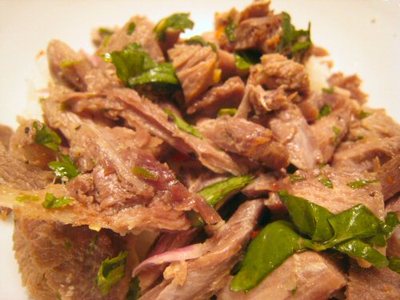
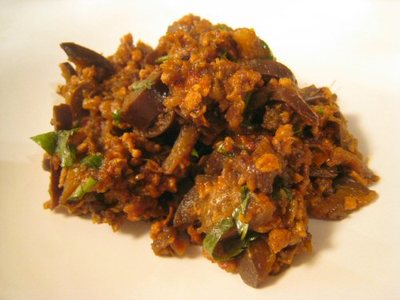
 Follow
Follow

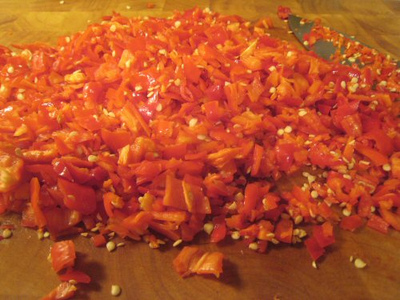
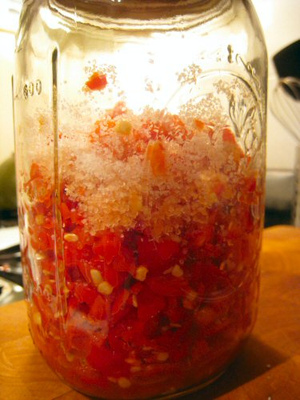
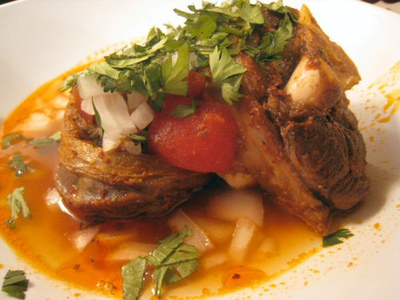


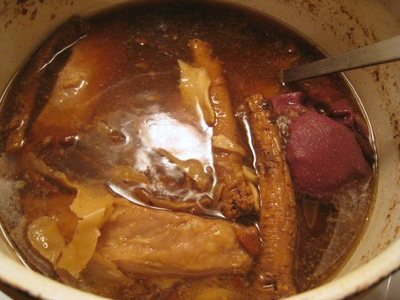
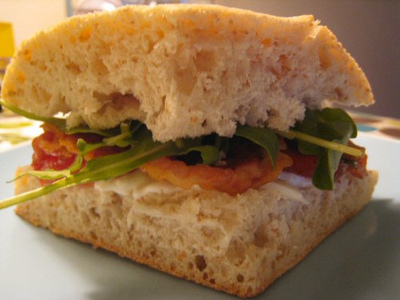
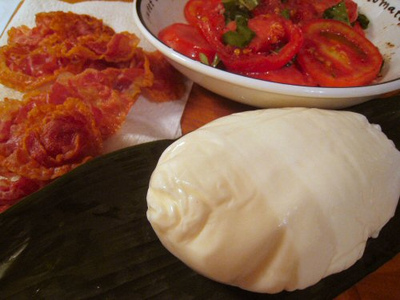
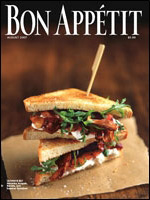 Simple as they are, sandwiches and salads are two things I like to leave to professionals. My versions always end up as weak imitations or when made up by me, just plain weak. You only need to compare my version to the original for a glaringly disproportionate bread/filling ratio. I didn’t think it was a big deal if I substituted pane rustico for brioche but that was a bit of a mistake. The crust was hard on the mouth and the inner crumb kind of dominated.
Simple as they are, sandwiches and salads are two things I like to leave to professionals. My versions always end up as weak imitations or when made up by me, just plain weak. You only need to compare my version to the original for a glaringly disproportionate bread/filling ratio. I didn’t think it was a big deal if I substituted pane rustico for brioche but that was a bit of a mistake. The crust was hard on the mouth and the inner crumb kind of dominated. 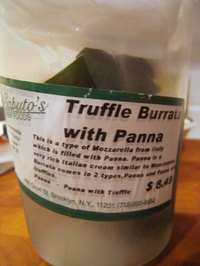
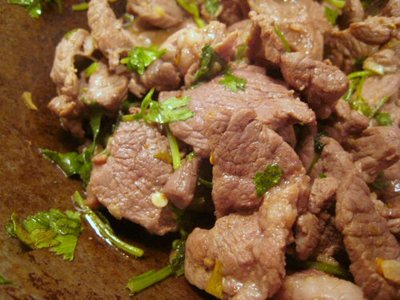
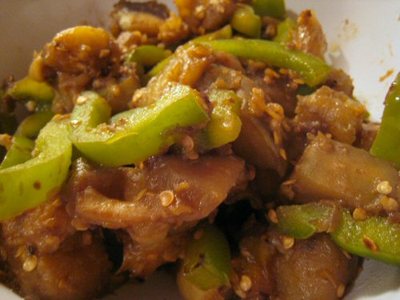
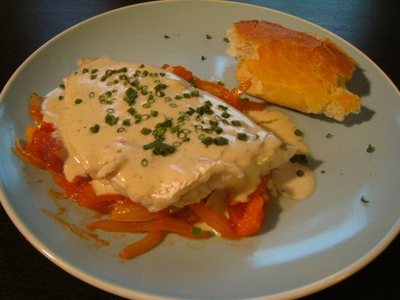
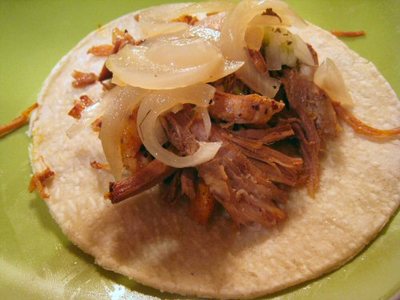
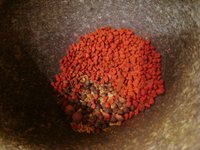
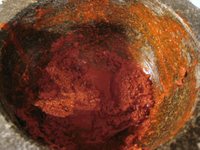
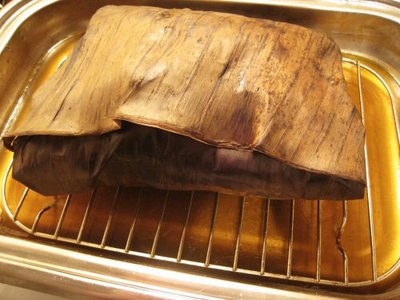
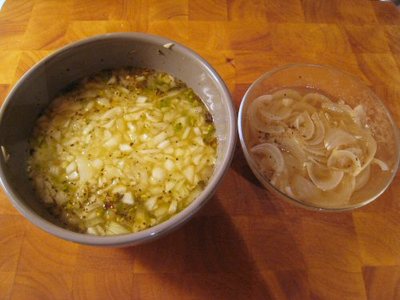
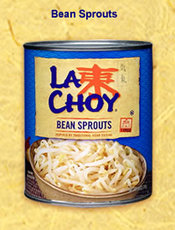
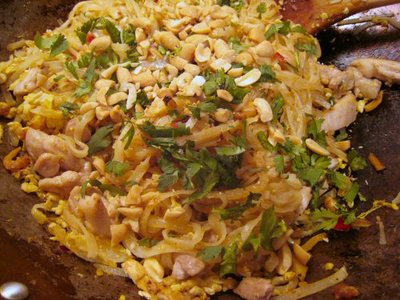
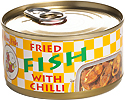 As an earlier lazy snack, I peeled open a tin can of fried fish with chile and consumed it simply with a small bowl of rice. It’s possibly the equivalent of canned sardines with crackers. A cheap treat with crunchy, edible bones but sweet and spicy. The only thing is that the cartoon
As an earlier lazy snack, I peeled open a tin can of fried fish with chile and consumed it simply with a small bowl of rice. It’s possibly the equivalent of canned sardines with crackers. A cheap treat with crunchy, edible bones but sweet and spicy. The only thing is that the cartoon 
